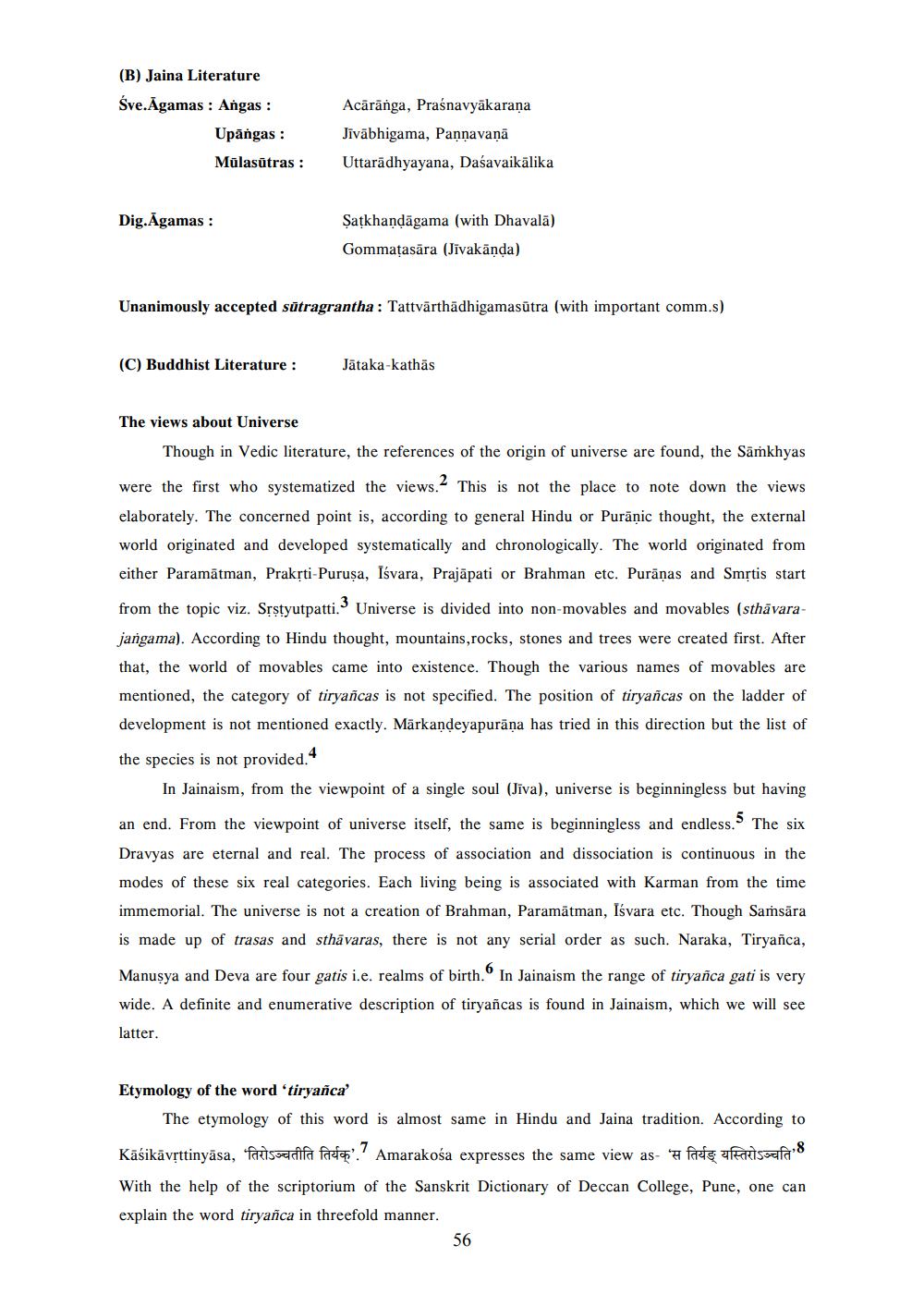________________
(B) Jaina Literature Śve.Agamas : Angas :
Upāngas : Mūlasūtras :
Acārānga, Praśnavyākarana Jīvābhigama, Pannavanā Uttaradhyayana, Daśavaikälika
Dig.Agamas:
Satkhandāgama (with Dhavalā) Gommațasāra (Jivakānda)
Unanimously accepted sūtragrantha: Tattvārthādhigamasutra (with important comm.s)
(C) Buddhist Literature:
Jataka-kathās
The views about Universe
Though in Vedic literature, the references of the origin of universe are found, the Sāmkhyas
were the first who systematized the views. This is not the place to note down the views elaborately. The concerned point is, according to general Hindu or Purāņic thought, the external world originated and developed systematically and chronologically. The world originated from either Paramātman, Prakrti-Purusa, Isvara, Prajāpati or Brahman etc. Purāņas and Smrtis start
from the topic viz. Srstyutpatti. Universe is divided into non-movables and movables (sthāvarajangama). According to Hindu thought, mountains,rocks, stones and trees were created first. After that, the world of movables came into existence. Though the various names of movables are mentioned, the category of tiryancas is not specified. The position of tiryancas on the ladder of development is not mentioned exactly. Mārkandeyapurāņa has tried in this direction but the list of
the species is not provided."
In Jainaism, from the viewpoint of a single soul (Jiva), universe is beginningless but having an end. From the viewpoint of universe itself, the same is beginningless and endless. The six Dravyas are eternal and real. The process of association and dissociation is continuous in the modes of these six real categories. Each living being is associated with Karman from the time immemorial. The universe is not a creation of Brahman, Paramātman, Isvara etc. Though Samsāra is made up of trasas and sthāvaras, there is not any serial order as such. Naraka, Tiryanca,
Manusya and Deva are four gatis i.e. realms of birth. In Jainaism the range of tiryanca gati is very wide. A definite and enumerative description of tiryancas is found in Jainaism, which we will see
latter.
Etymology of the word 'tiryanca'
The etymology of this word is almost same in Hindu and Jaina tradition. According to
Kasikavrttinyāsa, 'तिरोऽञ्चतीति तिर्यक्'. Amarakosa expresses the same view as- ‘स तिर्यङ् यस्तिरोऽञ्चति' With the help of the scriptorium of the Sanskrit Dictionary of Deccan College, Pune, one can explain the word tiryanca in threefold manner.
56




